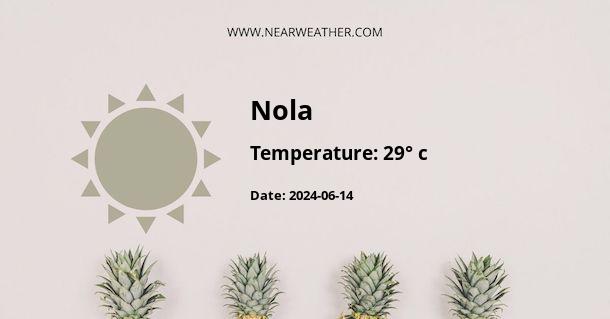Climate and Weather in New Orleans, Louisiana
New Orleans, often referred to as NOLA, is a vibrant city located in the southeastern part of Louisiana, United States. It is known for its rich history, diverse culture, and lively music scene. When it comes to the climate and weather in New Orleans, there are some unique characteristics that make it stand out. Let's explore the year-round climate patterns and weather conditions in NOLA.
Climate Classification
New Orleans falls under the humid subtropical climate classification. This means that the city experiences hot and humid summers, mild winters, and a significant amount of precipitation throughout the year. The Gulf of Mexico, which is located nearby, greatly influences the city's weather patterns.
Temperature
The average annual temperature in New Orleans is around 68°F (20°C). Summers are typically hot and humid, with average high temperatures ranging from 89°F (32°C) to 92°F (33°C). The heat index, which factors in both temperature and humidity, can make it feel even hotter. Winters are mild, with average high temperatures ranging from 63°F (17°C) to 66°F (19°C).
Here is a table summarizing the average monthly temperatures in New Orleans:
| Month | Average High (°F) | Average Low (°F) |
|---|---|---|
| January | 63 | 45 |
| February | 66 | 48 |
| March | 73 | 55 |
| April | 79 | 61 |
| May | 86 | 68 |
| June | 90 | 74 |
| July | 92 | 76 |
| August | 91 | 76 |
| September | 88 | 73 |
| October | 81 | 62 |
| November | 73 | 53 |
| December | 65 | 47 |
Precipitation
New Orleans receives an average of about 64 inches (1626 mm) of rainfall annually. Rainfall is spread fairly evenly throughout the year, with slightly higher amounts during the summer months. The city is also prone to thunderstorms, especially during the warmer months.
Here is a table summarizing the average monthly precipitation in New Orleans:
| Month | Average Precipitation (inches) |
|---|---|
| January | 5.6 |
| February | 4.8 |
| March | 5.1 |
| April | 5.2 |
| May | 4.9 |
| June | 6.4 |
| July | 6.2 |
| August | 6.5 |
| September | 5.9 |
| October | 3.8 |
| November | 4.1 |
| December | 5.3 |
Hurricane Season
New Orleans is located in a region prone to hurricanes, particularly during the Atlantic hurricane season, which officially runs from June 1st to November 30th. The city has experienced significant hurricanes in the past, including Hurricane Katrina in 2005, which caused widespread devastation.
It is important for residents and visitors to stay informed about weather updates during hurricane season and follow any evacuation orders or safety guidelines issued by local authorities.
Fog
Fog is also a common weather phenomenon in New Orleans, particularly during the cooler months. The city's proximity to bodies of water, such as the Mississippi River and Lake Pontchartrain, contributes to the formation of fog. It is important for drivers and pedestrians to exercise caution when visibility is reduced due to foggy conditions.
Conclusion
New Orleans has a humid subtropical climate with hot and humid summers, mild winters, and a significant amount of precipitation throughout the year. The city's unique location near the Gulf of Mexico, as well as its history of hurricanes, contribute to its distinct weather patterns. Whether you're visiting NOLA for its vibrant festivals or exploring its historic sites, it's always a good idea to be prepared for the local climate and weather conditions.
A - Nola's Latitude is 3.527160 & Longitude is 16.040001.
A - Weather in Nola is 24° today.
A - Climate Conditions in Nola shows light rain today.
A - Humidity in Nola is 77% today.
A - Wind speed in Nola is 2.81 km/h, flowing at 212° wind direction. today.
